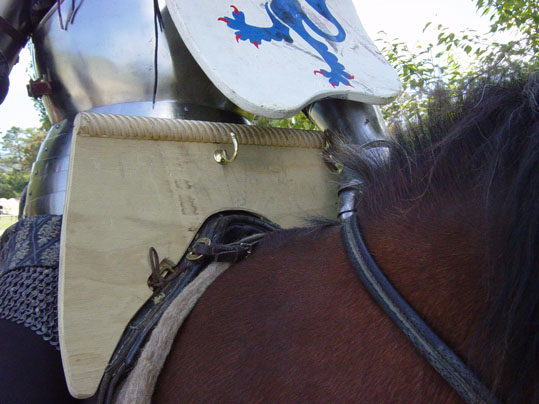Posts: 129 Location: Ramona CA USA
Sat 05 Jan, 2008 11:43 pm
The earliest asymmetrical gauntlets I've seen were from roughly 1440. I don't consider asymmetrical gauntlets to constitute the left being a "manifer".
The evidence suggests fully developed "manifers" didn't occur until the end of the 15th century, when very specialized jousting harness and garnitures appear.
I would suggest adjusting your
shield shape or curve, rather than trying to solve your interference issues by changing gauntlets. Shield shape and curvature can hugely affect vambrace and gauntlet interaction. Also, consider the idea that flared cuff gauntlets are relatively common in your chosen period which means that this style of gauntlet probably worked fine as long as the other kit was arranged appropriately, so it's more likely your shield is the issue rather than the armour.
Of course that assumes the gauntlets you're wearing are built in an historically correct way.
One side issue, you mention the saddle plate, so is it changing your normal hand position, and if the saddle plate is attached to a modern saddle, could the saddle be creating an historically inaccurate riding position requiring you to hold your hand forward of where it should be in a short and high seated medieval saddle?
What happened to your Henry V saddle?
Here's what i've been working on lately for myself:
http://www.facebook.com/album.php?aid=22496&a...=554676085
